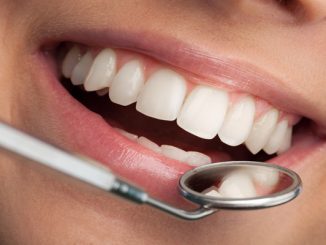

So, what is the best scar treatment. Most people do not go through life without collecting a few scars here and there. Perhaps you fell off your bike when you were seven, or you had to have knee surgery in high school, or you accidentally cut your hand slicing vegetables while making your first pot of potato soup. Dermatologists and surgeons agree that any injury to the skin that is more than just an apparent scrape is going to go away a scar of some kind. Scars are made of collagen, which is a protein usually found in the second layer of skin, as a way to repair the skin. Some scars will fade with time; deepest scars are usually with you for life.
For those deeper scars that just want to hang around like a guest that has overstayed their welcome, many types of skin treatments and procedures can minimize their appearance. As the old saying goes, however, an ounce of prevention is worth a pound of cure. If you treat your wounds quickly and treat them correctly, you can decrease the likelihood that you will get a bad scar. Here are some dos and Don’ts to help you prevent new scars from forming, and advice on what to do about the ones already there!
DO NOT use hydrogen peroxide on a wound. Many people think the bubbling effect of peroxide means it is working, but the liquid can actually destroy new, healthy skin cells that are growing over the wound.
DO cover your wounds! Many people think that letting wounds “breathe” is best for them, but it is a myth that can actually decrease healing time by 50%! If a wound is kept moist, a hard scab will not form and new tissue can begin growing sooner. Treat your wounds every day with antibiotic ointment (Neosporin is a popular brand) to prevent infection and cover with a bandage. Stop using antibiotic ointment after one week, continue to keep the wound moist with regular petroleum jelly (i.e. Vaseline), and continues to use a bandage as long as new skin does not begin to form.
DO NOT use vitamin E to treat your wounds. Even though your grandparents may have told you it is good for cuts (my grandfather kept capsules for this purpose!), a study done by the University of Miami has shown that vitamin E can actually prevent healing. In the study, thirty percent even ended up developing allergies to vitamin E.
DO keep the wound under pressure. There are special bandages and silicone sheets, which will maintain a certain amount of pressure on the wound. According to several scientific studies, it can actually keep the skin surface even and flatten out any scar formation – even Keloids (although science doesn’t yet know why, it is known that those with darker complexions are more prone to form ropy, thick keloid scars, so prevention is even more important for dark-skinned individuals).
DO NOT allow new scars to have sun exposure. UV rays not only can cause dark discolorations in newly formed skin tissue, but also they actually slow down the healing process. When you know you will be in the sun, use a broad-spectrum sunscreen that contains an SPF of at least 15 (30 is best).
DO massage the skin where the wound occurred gently once the wound has healed. Dermatologists and plastic surgeons recommend massage for healing skin to break the thick collagen bands that tend to form on the underlying tissues and cause scarring. They recommend that once the wound has completely healed, you should use a lotion to massage the new skin using a circular motion with the fingertips for 15 or 30 seconds; it is recommended you do this several times a day. In lieu of lotion, you can use an anti-scar preparation like Mederma, an over-the-counter ointment that contains an extract from onions, which can inhibit collagen formation.
DO NOT ignore any scar or wound that starts to become red, itchy, or begins to puff up. This can signal that you are experiencing an infection or an allergic reaction to a skin preparation or a bandage’s material. See a doctor immediately. Often, you will receive a corticosteroid injection that will trim down inflammation and can break down excess collagen. Important: If the wound is in an area that will be conspicuous if a scar is left and you cannot deal with a scar in this area (such as the face), consult with your doctor early in treatment about preventing scars, or about laser treatments. If scars are treated with laser and they are new such a treatment can be very effective.
DO talk to your doctor about removing stitches as soon as possible so that “track” scars are not left behind. These are small bumps where the thread or staples entered the skin that can form around wounds. Stitches can usually be removed after a week.
DO NOT give up on laser treatments for older scars. Lasers can be very effective at reducing the appearance of very old scars, and while the level of response cannot be known until after treatment is applied, older scars usually do respond at least a little – sometimes they respond as well as a fresh scar. Lasers can treat all sorts of scars, from Keloids to surgical scars and acne scars. Laser treatments are considered as the best scar treatment and usually require multiple sessions may cost upwards of $600, which are not always covered by insurance.











Leave a Reply
You must be logged in to post a comment.